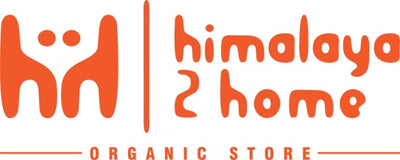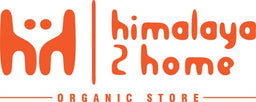H2H Bee Pollens- multi flora
Bee pollen refers to the flower pollen that collects on the legs and bodies of worker bees. It can also include some nectar and bee saliva. Pollens come from many plants, so the contents of bee pollen can vary significantly.
Bee pollen is the food of the young bee and it is approximately 40% protein. It is considered one of nature's most completely nourishing foods. It contains nearly all nutrients required by humans. About half of its protein is in the form of free amino acids that are ready to be used directly by the body.
The color of the pollen varies, ranging from bright yellow to black. Bees usually collect pollen from the same plant, but they sometimes collect pollen from many different plant species. The pollen grains depend on the plant species; they differ in shape, color, size and weight.
Bee pollen is known as an apitherapeutic product because it contains groups of chemical compounds that are made by bees and used for medicinal purposes.
Chemical Composition of Bee Pollen-
30 percent digestible carbohydrates
26 percent sugars (mainly fructose and glucose)
23 percent protein (including 10 percent of essential amino acids)
5 percent lipids (including essential fatty acids)
2 percent phenolic compounds (including flavonoids)
1.6 percent minerals (including calcium, phosphorus, magnesium, sodium, potassium, iron, copper, zinc, manganese, silicon and selenium)
0.6 percent water-soluble vitamins and acids (including B1, B2, B6 and C)
0.1 percent fat-soluble vitamins (including vitamins A, E and D)
Special Precautions & Warnings:
Pregnancy and breast-feeding: Taking bee pollen is POSSIBLY UNSAFE during pregnancy. There is some concern that bee pollen might stimulate the uterus and threaten the pregnancy. Don’t use it. It’s also best to avoid using bee pollen during breast-feeding. Not enough is known about how bee pollen might affect the infant.
Pollen allergy: Taking bee pollen supplements can cause serious allergic reactions in people who are allergic to pollen. Symptoms can include itching, swelling, shortness of breath, light-headedness, and severe whole-body reactions (anaphylaxis).
Please avoid consuming Bee pollens if you are allergic to pollens or is under medication. Consult your physician first.
Top 8 Bee Pollen Benefits
1. Reduces Inflammation
2. Acts as an Antioxidant
3. Protects Against Liver Toxicity
4. Boosts the Immune System
5. Serves as a Dietary Supplement
6. Relieves Menopausal Symptoms
7. Helps Relieve Stress
8. Promotes Healing
Digestive System - In addition to healthful vitamins, minerals and protein, bee pollen contains enzymes that can aid in digestion. Enzymes assist your body in getting all the nutrients you need from the food that you eat.
How to enjoy Bee Pollen:
Be pollen tastes slightly sweet and the granules can add a crunchy texture to foods if left whole. No worries though, you can also blend them up easily with other ingredients. So, what can you mix with it? If you're interested in adding bee pollen to your daily routine, here are 10 of our favorite ways to enjoy it:
1. Stir some bee pollen granules into your yogurt along with a bit of H2H honey for additional antioxidant and anti-inflammatory benefits.
2. Blend bee pollen into a protein shake before your workout -- we like it with vanilla protein powder and a ripe banana.
3. Add bee pollen to hot or cold cereal along with fresh berries for vitamins and flax seeds for omega-3 essential fatty acids.
4. Make a smoothie with beets, apples, ginger, orange and bee pollen. This ruby drink can support joint health and reduce inflammation -- great for protecting the body if you train regularly.
5. Top a piece of whole grain or Ezekiel sprouted toast with almond butter and bee pollen as an energizing pre-workout snack that provides fiber, fat, protein and carbohydrates. A winning combo.
6. Add bee pollen as a crunchy topping to your acai bowl for breakfast. We like it with some slivered almonds and blueberries.
7. Combine sweet and savory by dipping apple slices in hummus and then topping with bee pollen granules. You'll be getting tons of protein and fiber in this simple snack.
8. Sprinkle bee pollen on top of a salad of baby spinach, walnuts and fresh pears. Drizzle with extra virgin olive oil and balsamic vinegar for a fast lunch full of vitamins.
9. Make your own granola bars with steel cut oats, nuts, dried fruit and bee pollen granules for a nutritious, portable snack.
10. Cut up chilled melon like honeydew and cantaloupe and dip in bee pollen. Melons are incredibly hydrating due to their high water content.
Source : https://www.evitamins.com/in/a/10-ways-use-bee-pollen-1200









